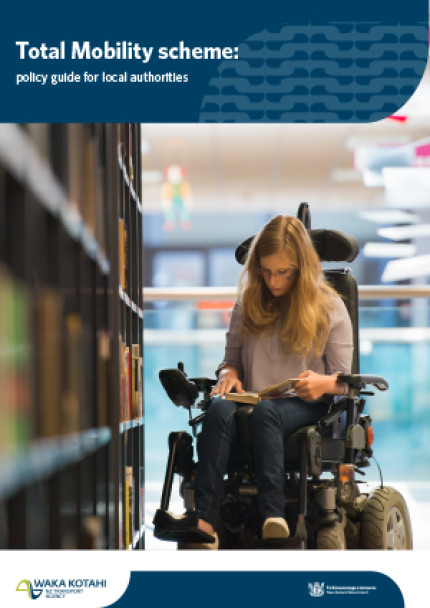The purpose of this policy guide is to achieve a nationally consistent approach for local authorities to administer the Total Mobility scheme in their respective regions.
This guide sets out the requirements, policy, principles, processes and explanatory notes to manage the Total Mobility scheme.
About Total Mobility
Funded in partnership by local and central government, the Total Mobility scheme assists eligible people, with long term impairments to access appropriate transport to meet their daily needs and enhance their community participation. This assistance is provided in the form of subsidised door to door transport services wherever scheme transport providers operate.
The Total Mobility scheme is intended to complement the provision of public transport services, which are expected to be as accessible as possible to meet different mobility needs.
Waka Kotahi NZ Transport Agency first published a policy guide for local authorities in 2008 and a user guide in 2010.
For the user guide:
Total Mobility around New Zealand: a regional guide to using the Total Mobility scheme

Phase 1 provides for an increased financial assistance rate (FAR) of 50 percent effective from 1 July 2005. This increase applies to all local authorities operating the scheme that agree to implement the 11 improvements to the scheme's purpose, eligibility and entitlement.
This additional assistance is subject to local government funding not falling below budgeted 2005/06 levels. These improvements are explained in more detail in section 4.
¹ The provision of a subsidised transport service to eligible people with impairments is consistent with local government responsibilities to the transport disadvantaged, and part of core business. For further information, see page 10 of the Ministry of Transport's final report (MoT, 2005).
² It is not intended the scheme be a substitute for transport services that are the responsibility of other government agencies, such as the Ministry of Education, which is responsible for all school-related travel.
³ It is not intended the scheme be a substitute for transport services that are the responsibility of the rest home provider, or be used by the rest home to provide transport for organised activities.